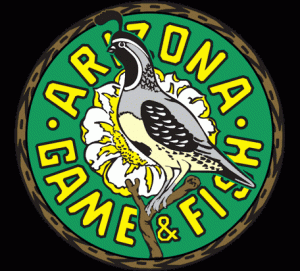Source: Arizona Game and Fish Department Press Release – August 11, 2017
The Arizona Game and Fish Department is accepting applications for more than $400,000 in Heritage Fund grants. The deadline to submit an application is Tuesday, Oct. 31, 2017 to be eligible for grant funding, which will be available through a competitive application process in the following categories: environmental education, outdoor education, schoolyard habitat, urban wildlife/habitat, public access; and Identification, Inventory, Acquisition, Protection and Management (IIAPM).
funding, which will be available through a competitive application process in the following categories: environmental education, outdoor education, schoolyard habitat, urban wildlife/habitat, public access; and Identification, Inventory, Acquisition, Protection and Management (IIAPM).
In addition to government agencies, the department welcomes non-profit organizations to apply for a Heritage Grant as eligible applicants. This eligibility applies to any non-profit group which meets the internal revenue service definition of a 501(c) organization.
The Heritage Fund was created after voters approved an initiative in 1990 and is funded through Arizona Lottery ticket sales. Heritage funding goes toward conservation efforts such as protecting endangered species, educating students and the general public about wildlife and the outdoors, and creating new opportunities for outdoor recreation.
The grant program was established by AZGFD in 1992 as part of the overall Heritage Fund program. The grants were initially developed as a way to promote outreach to enhance important partnerships and generate fresh approaches in support of the department’s mission. Since the grant program’s inception, the department has awarded more than $16 million and supported more than 800 projects throughout the state.
Applicants for this year’s grants should refer to the documents on our Heritage Grant web page for guidance on applying. The documents include the Heritage Grant application manual, the grant application form and the various “Heritage Grant Funding Window” documents, which describe eligibility information and provide specific eligibility criteria listed within each grant sub-category.
Potential grant recipients must have a project that is either located in Arizona or involves research in which the wildlife or its habitat is located in the state and meets the requirements in the funding windows.
Proposals and applications for these grants can be submitted either by e-mail to rbeck@azgfd.gov or mailed to Arizona Game and Fish Department, Attn: Wildlife Grant Administrator, 5000 W. Carefree Highway, Phoenix, AZ 85086. No faxed applications will be accepted.
Applicants can submit grant applications up until the application deadline of 5 p.m. (MST)Tuesday, Oct. 31, 2017.




You must be logged in to post a comment.